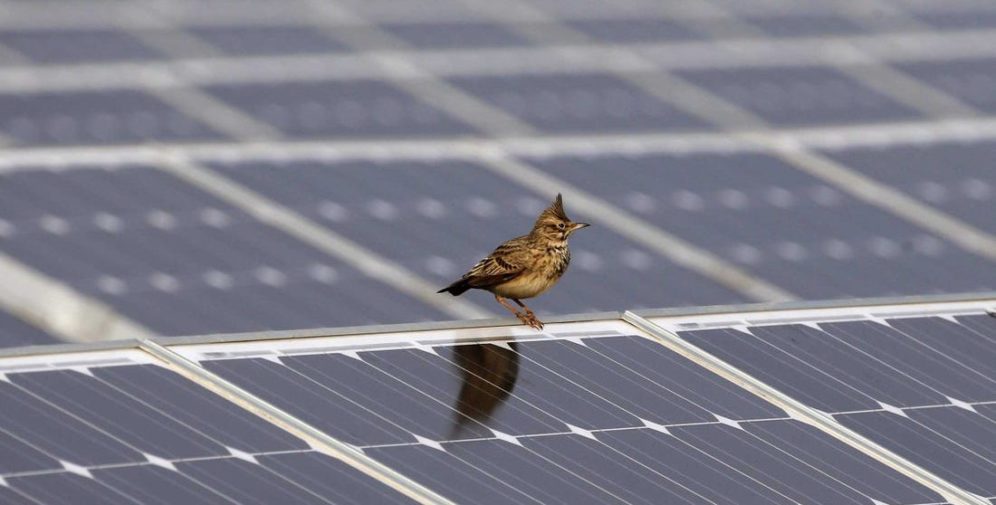In an effort to further explore how solar installations interact with the wildlife around them and thanks to a $1.3 million award from the U.S. Department of Energy’s (DOE) Solar Energy Technologies Office, the DOE’s Argonne National Laboratory will be conducting a three-year technology development using artificial intelligence to find out what happens when birds fly by, perch on or collide with solar panels.
The Argonne project was selected as a part of the Solar Energy Technologies Office Fiscal Year 2019 funding program and is being headed by Yuki Hamada, an Argonne remote-sensing scientist.
This is not Argonne’s first foray into the relationship between birds and solar installations. In 2016, the lab released a study concluding that solar-related instances of avian mortality numbered between 16,200 and 59,400 birds in the southern California region annually, which was extrapolated to between 37,800 and 138,600 throughout the U.S. annually.
That study, however, included levels of human interference and monitoring, like requiring people to walk the facilities and search for bird carcasses and really offered little insight into the relationship, outside of mortality. This new study aims to significantly reduce that human element, using just cameras for surveillance, and teaching software to identify birds from the camera’s feed.
Teaching a program what a bird is and how to detect its interactions is easier said than done. Argonne has previously trained computers to distinguish drones flying in the sky overhead, so this will be used as the basis. From that foundation, thousands of video footage of panels will be used to condition the software to detect birds and identify what the bird is doing in the shot (perching, flying through or colliding) in a more complex environment, as the backdrop for the previous experiment was the sky.
“The unique thing about this project, compared to many other machine learning projects, is that our target is very opportunistic, compared to other targets like pedestrians or cars,” said Hamada. “Bird activity like collisions, we don’t plan for that. We don’t know when it happens or where it happens. How can we model those activities that are of interest to us. Even perching: we don’t control when birds fly.”
Video collected near panels will likely capture enough perching and fly-though to condition the software, while instances of collision may be simulated, due to their relative rarity.
The study is being applied specifically to large, ground-mounted installations. Hamada shared with pv magazine that the aim of the study is not to be an end-all-be-all analysis of the interactions of birds and solar systems, but rather to develop a monitoring system that can be used worldwide. Once a larger geographic monitoring base is established, then the true conclusions about the solar-bird relationship can be developed.
“Our goal here is to facilitate data collection in a more consistent and systematic fashion that will help us and other researchers answer research questions,” said Lee Walston, an Argonne scientist working on the project. “Like the Lake Effect Theory: are birds attracted to solar installations (do birds mistake the panels for bodies of water)? More data from different parts of the country and at different solar facilities over a longer period of time can address those questions.”
Hamada estimates that just training the model to identify bird activity from other visual data will take two years because of the amount of footage needed to condition the software, and adds that this teaching will continue beyond, as the program will be re-trained and updated as overall machine learning techniques advance. The third year of the project will be dedicated to model validation, testing and observation. The final, operational and marketable software will take longer than three years to develop. This study will be the foundation for a marketable bird monitoring system tobe built from.
Hamada also shared that later models of the program could be tweaked to work in the rooftop space, or for other, non-ground-mount projects, as well as with other kinds of wildlife, but that those applications are far down the line and are outside of the aim of this study.
This content is protected by copyright and may not be reused. If you want to cooperate with us and would like to reuse some of our content, please contact: editors@pv-magazine.com.








Mr Hamada,
My solar panels are ground mounted on tracking Solar Mounts that track in both azimuth and elevation. Having owned operated and manufactured them for 15 years, I have never had Even one instance of a bird of any species dying from an impact with my mounts or panels. Nor have I ever seen any species of bird attempting to commit suicide by impacting my panels.
I have however experienced many cases of defecation as the birds love to perch On my panels. It appears that your study is a solution looking for a problem. I’m sure that the money could be spent on more worthwhile endeavors, And perhaps you would entertain returning the money To your benefactor.
Respectfully,
Carter Boswell
Nice Article.
A Similar Study was done in Kolkata , India 2 year Ago , but with the Windmill.
The Conclusion drawn from the study between relationship of WindMil and Birds are that ,
Birds have sense of Micro Waves.
And When we talk about Micro Wave is not just about radio frequency but the microscopic change in Natural Phenomenon like , Wind Speed,Gravity , Magnetic Wave.
No Wonder why pigeon never forgets the route.
I Anticipate the same thing with Solar waves , as Solar wave is more commonly can be seen by birds just like rest of the living organisms like Plants and the trees.
What do you think on this?
i am sure, we are heading for this in the coming time. Thanks for sharing this.